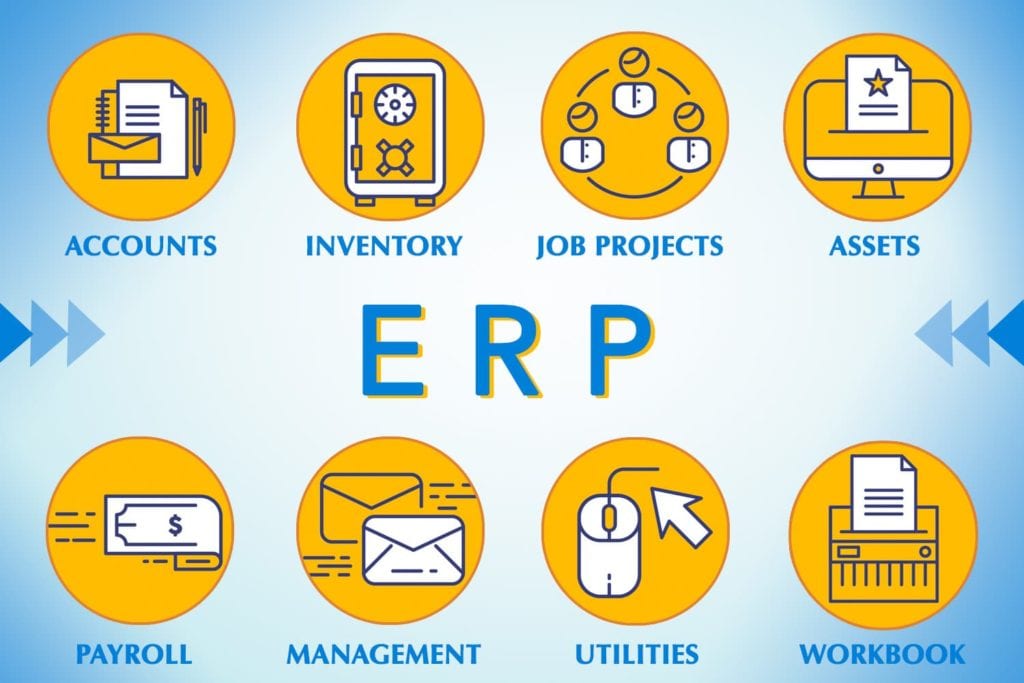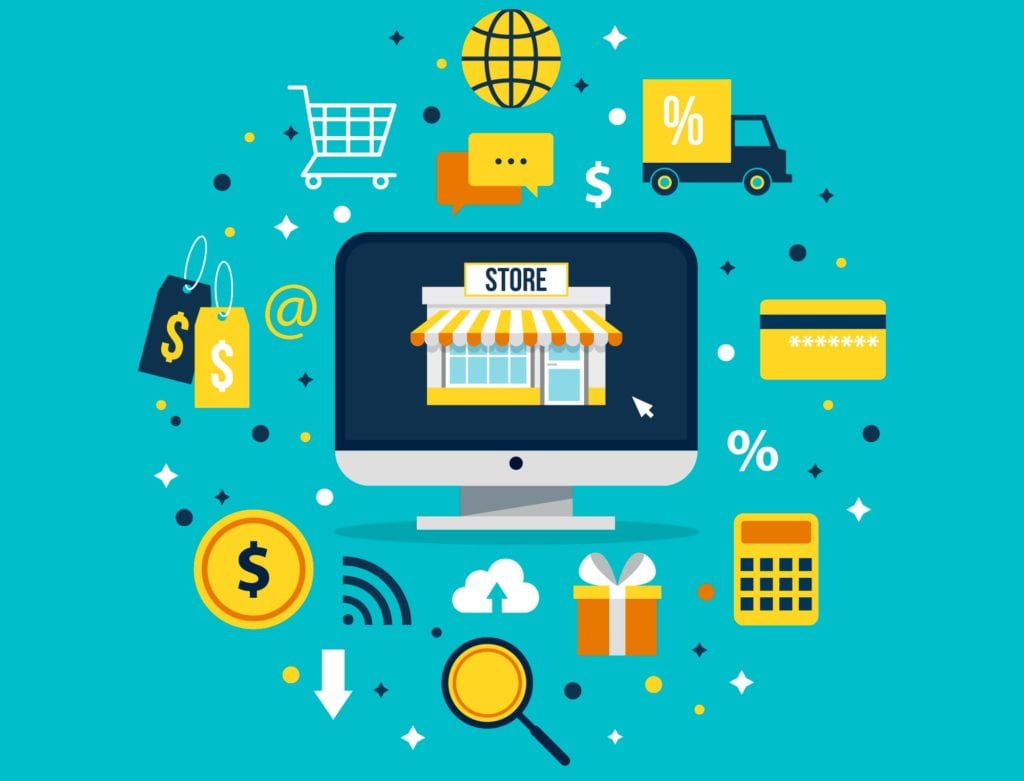Maximise your ERP and CRM Integration
July 26, 2019 3:08 pm | by John Adams

ERP and CRM integration allows departments and systems to talk with each other to increase profitability and sales. A Customer Relationship Management (CRM) system provides transparency, better qualified leads and manages valuable customer interactions. It also stores valuable information from your marketing department. Marketing develops new customer relationships through content, digital marketing and management, sourcing and nurturing leads etc. This helps with brand awareness and increasing your market share.
On the other side, your ERP system manages the back-end processes from accounts, operation and human resources departments. These include order placement, tracking, billing, shipping, accounting and supply chain details. So why integrate these systems and departments together?
Benefits to your bottom line of an ERP and CRM integration
1. Reduction in data entry and improved efficiency.
One centralised location for your data ensures any updating of information from accounts, operations, sales or marketing is only entered once. This saves you time and money as these mundane tasks are often labour-intensive. Combining your CRM and ERP automates and manages processes through workflows, which enhances your efficiency by simplifying them.
2. Stronger Visibility, Forecasting and Accuracy.
Your sales reps need to be able to access on-the-go, real-time data. Errors are reduced when they can enter a quote or order in the one system. The ERP system allows the sales rep to look into current inventory and costings for these quotes. The CRM stores promotional and marketing activities which can be accessed whilst on the road to obtain true, accurate quotes. Customer interactions and sales documentation can be produced quickly increasing visibility and efficiency. By integrating both, staff gain access to the whole picture to assist with sales and forecasting.
3. Complete 360-degree view on your customers.
A complete view of your customers provides better insights for building lasting relationships and determining where there is potential for future growth. Fast and consistent up-to-date data enables better analytics and reporting. This helps to effectively market and track changes in your customers preferences, profitability, and loyalty.
4. Cross-Departmental Collaboration.
Departments have different functions within the business and can sometimes discourage collaboration and sharing of information. This ends up making data accessibility a challenge and duplication a problem. When departments talk to each staff are able to access real-time data, view all relevant key facts, so they can work towards achieving the company’s goals.
How They All Work Together
Both ERP and CRM systems improve efficiencies in business processes which in turn strengthens your business. A CRM system coupled with marketing drives sales; an ERP system manages customer information once the order has been placed to reduce overall costs.
With one source of truth, management has an overview in real-time of the business, what is happening in every department. This is extremely important for growing companies and companies who want to scale. A single source of all data and transactions contains contact details, shipments, credit history for quotes, orders and any other customer service interactions. This ensures anyone from sales, marketing, accounts or operations can access a complete history of the customer when required. Business workflows will be enhanced which ultimately improves revenue generation, reduces costs, and provides management with more insightful and useful reports.
Click for more information on ERP and CRM systems and the latest release of SapphireOne ERP, CRM, DMS and Business Accounting Software Application. Alternatively, contact our office on (02) 8362 4500 or request a demo.
The next big thing relating to Multi-Entity Accounting
March 28, 2019 2:02 pm | by John Adams

Running your large enterprise and managing interests in two or more legal identities can be complex and complicated. With multi-entity accounting add in the multi-locations, multiple currencies, multi regulations, and you have a whole world of pain to track and manage. The old way is to manually prepare separate accounting for each; expenses, currencies, payments, tax returns and often payroll which can be time consuming. Afterwards you cross your fingers and hope your BAS returns, tax and financial information is correct and balances.
Nowadays your accounting software can sort and align data within the one centralised database. You can run multiple businesses completely independent from each other and automate financial consolidation activities. Imagine eliminating manual processing, having a clear picture of your overall group performance. Spend time concentrating on growing your business.
What are the challenges facing multi-entity accounting and financial reporting
There are definitely some unique challenges in multi-entity accounting and the way to tackle these are by having all the elements combined into an ERP system.
- Consolidation- combining multiple levels and entities. Financial accounts of each entity need to adhere to the correct accounting standards, regulations, rules, and practices of jurisdictions and countries.
- Transactions- multiple countries and currencies poses transactional challenges for any global company. Even if your business is located in a single country, you still need to conduct inter company transactions. Transfer pricing and inter company cost allocations becomes complicated and time consuming.
- Manual entries- it goes without saying, manual entries increase the probability of errors and can lead to inefficient reporting with Excel spreadsheets.
ERP accounting software solutions
An ERP system will fully automate the processes and provide real-time reporting. The management team can make changes, monitor tasks and performances across the whole enterprise. It will provide global consolidation for multiple locations and entities, across different currencies and languages, at a touch of a button. Replicating transactions will be automated between the entities.
SapphireOne ERP provides hassle free multi-entity financials by streamlining the entire process.
Benefits of ERP Modules in ERP Software Applications
February 8, 2019 11:27 am | by John Adams

Whether you’re a small or large enterprise, business accounting software is becoming more and more prevalent. Business owners are finally realising that struggling in doing their own accounts and coping with spreadsheets, paper receipts and inconsistent invoices or the option of hiring an expensive accountant, is not the optimal solution. That’s where ERP modules and ERP accounting software helps out.
ERP accounting software records and processes accounting transactions utilising modules such as accounts payable, accounts receivable and payroll. There are many ERP modules in an ERP software application. Together these modules work as an accounting information system. Each ERP module is for different processes within an organisation.
ERP Accounting software packages have a list of modules you can purchase and configure into your ERP application.
8 Modules included in the SapphireOne ERP Application
SapphireOne is a platform independent all-in-one ERP, CRM, DMS and Business Accounting Software Application located within the one datafile. One of our strongest selling points is all 8 modules and any add-ons are offered at no additional charge to our clients. Being all-inclusive, you have the functionality of access being provided to every module via a single toolbar.
ERP Modules:
Accounts– Accounts mode manages your day to day accounting operations via modules Receivables, Payables and General Ledger.
Inventory– Inventory mode manages your inventory and stock from an initial requisition to final sale and all POS transactions. Modules included are Sales, Purchases, Inventory Manager and POS.
Job Projects– Job Projects mode helps you maximise profit by tracking of revenue and costs which are related to a specific task or job. Modules included are Cost, Resources, Inventory and Job Projects.
Asset Management– Asset Management mode manages your day to day operations to obtain a clear assessment of all aspects of your asset registry. Modules included are Inquiry, Transactions, Report and History.
Payroll/HR– Payroll/HR mode helps setup pay periods, track history, administrate employee history, leave requests and onboard HR. Modules included are Payroll, Report, Administration and History.
Management– Management mode provides unique analysis tools assisting you to obtain a quick snapshot or an in-depth review of your business performance. Modules included are Analysis, Management and Audits.
Utilities– Utilities mode contains all your historical transactions and system defaults – the rules that control your data file. Modules included are History, Controls and Utilities.
Workbook– Workbook mode combined with user access and user preferences, provides you with the ability to group functions of a user so they can be easily accessed. Contacts, Actions, Documents, Pictures, Tracking Notes, Mail Book, Phone Log, Visitor’s Book, Calendar, Document Manager and PDF Capture are located here.
Click for more information regarding improvements and features within the latest release of SapphireOne ERP, CRM, DMS and Business Accounting Software Application. Alternatively, contact our office on (02) 8362 4500 or request a demo.
Why ERP back-end Accounting and eCommerce Platforms work well together
December 20, 2018 3:47 pm | by John Adams

More and more people are turning to eCommerce for both B2B and B2C and using platforms to build their online presence. eCommerce platforms such as Shopify, Magento, WooCommerce allows you to build storefronts to sell your products and services online, in store, on social media or anywhere mobile. An ERP application will integrate orders with inventory, accounting, shipping and other back-end functionalities, leading to increased efficiency and better customer service. An ERP will also automate processes leaving management time to focus on what’s important, planning and forecasting.
Benefits of eCommerce and ERP Integration
Business intelligence and working smarter with your datafiles enables your business to get ahead of the competition. When integrating an ERP and eCommerce platform, your main data from order, inventory, item, customer, shipping and tracking, start communicating with each other forming a centralised database. Inventory and pricing information is available to customers and staff in real-time.
Manual practices will be reduced such as hand-keying sales into your ERP, entering details of excel spreadsheets, which in turn saves time and money by reducing errors. It’s easy to make mistakes, anything can be entered the wrong way during the sales channel. This can lead to incorrect or missing inventory and product details incomplete. With the ERP integration inventory can be streamlined, track updates and inventory levels provided to customers in real-time and automatic notifications provided when the goods are shipped.
Another benefit of eCommerce ERP integration is flexibility. Multiple online, web or instore, offline bricks and mortar stores can be added without disruption to your business operations. SapphireOne is built to handle unlimited number of companies that can sit within different tax jurisdictions, have their own financial year-ends and trade in their own local currencies.
Streamlining Integration
In order for this to happen smoothly and seamlessly, every business needs to develop an eCommerce ERP integration strategy. This outlines what other enterprise systems need to be connected and how this will be achieved. Depending on the platforms, customisation can be performed.
What is important and needs to be specified is the data to be included in the integration, where the data source is from, where it will be going, and lastly how often it will be updated. It is critical to look at online orders, offline orders, shipping and tracking information, customer and product data. A data migration plan should be adopted with a backup strategy. SapphireOne’s Product Initiation Document (PID) is an extensive high-level project plan. It outlines for the Project- time, cost, scope, how and when quality performance targets will be achieved, the major products, activities and resources required, and provides a baseline against which to monitor the project’s progress stage by stage.
Click for more information regarding improvements and features within the latest release of SapphireOne ERP, CRM, DMS and Business Accounting Software Application. Alternatively, contact our office on (02) 8362 4500 or request a demo.
Why do your organisation needs ERP accounting software?
August 8, 2018 12:22 pm | by John Adams

It is vital for managing all financial aspects of your day to day business activities.
You can perform basic accounting tasks such as generating financial reports, invoicing, tracking income and expenses. Accounting software manages your financial data and analyses sales performance and cashflow which ensures you make informed decisions.
All organisations have to perform a number of tasks to make their company financially successful, ERP Accounting software is an essential investment for any business large or small
SapphireOne ERP CRM DMS Accounting software is designed to help companies introduce accounting accuracy to achieve peak financial performance. SapphireOne ERP CRM DMS is built to comply with international accounting standards and principles, providing comprehensive reporting functionality to assist in reviewing company performance. SapphireOne ERP CRM DMS is a unique accounting software.
Managing Cash Flow
One of the biggest challenges for any business is to manage cash flow efficiently, organisations and business owners need to keep records of all the cash coming in and going out of the business. SapphireOne ERP CRM Accounting software enables business owners to manage their business cash flow management of expenditure and keeps track of the financial status of the company easily.
Invoice Tracking with DMS
Invoice tracking is very important for any organisation’s success. SapphireOne’s in-built document management system (DMS) allows you to attach all supporting documentation by simply clicking on SapphireOne’s paperclip in any related transaction and ensures easy invoice tracking.
Time Saving and Accuracy
SapphireOne ERP Accounting software quickly performs different tasks such as invoicing, sending payment reminders, paying vendors, reconciling bank accounts and generating reports. SapphireOne ERP accounting software provides fast and accurate information. SapphireOne provides a clear and accurate view of the financial standing of your organisation to assist you in managing your business and making informed decisions.
Accounts Receivable
The Accounts Receivable module in SapphireOne’s accounting software is for the entry of all transactions that are involved with Income for the organisation. This may be through Cash Sales or Client Invoices etc. Client accounts are managed efficiently with customer tracking, invoice management, activity analysis, receipt and cash receipt processing.
Accounts Payable
The Accounts Payable module in SapphireOne’s accounting software handles all transactions that are involved with the payment of vendor invoices for the company, this includes the tracking of cash, credit card and eft and other types of payments.
Financial Reporting
SapphireOne ERP CRM DMS accounting software has comprehensive reporting functionality which allows you to analyse all aspects of your financial accounts. Designed with flexibility in mind, SapphireOne reports can be designed to meet your requirements and can be sorted by multiple criteria with numerous levels of details to choose from. Strong reporting tools are essential to your organisation and are fully integrated within the SapphireOne ERP CRM DMS Accounting Software application suite.
For a sneak peek at the full capabilities ERP, CRM, Accounting Software, Human Resources, Payroll, Assets and Document Management, check out SapphireOne and request a live demo, it is everything you’ll ever need to make your company management a success. Know more about us.
Site visit to Frutex Australia, where Single Touch Payroll in SapphireOne has been in use since 1 July 2018
July 20, 2018 3:10 pm | by John Adams
On Thursday 19th July 2018 SapphireOne toured Frutex and Spicemasters with three senior staff members from a potential client. Harry Magiros is the IT and Marketing Manager for the Frutex group of companies, he gave an elegant and informative presentation of the power and flexibility of SapphireOne and Single Touch Payroll in SapphireOne.
The Frutex site is 60,000 square metres including their corporate head office and 6 warehouses. The site has multiple manufacturing facilities which include fruit washing, packing, blending and glyceration, infusion of dry vine fruit, packing and blending of frozen fruit and berries.

The largest warehouse onsite is a bulk storage facility which allows the storage up to seven vertical pallets. The Frutex server room uses a significant amount of battery power run by approximately 1800 solar panels situated on the top of their corporate head office, which produce around 500kw.
Harry took us on an inspection of their manufacturing and production lines at the Spicemasters campus, where we viewed the largest steam steriliser in the southern hemisphere. The Spicemasters site has grinding and blending facilities for herbs, spices, seasonings and gravies. They also create individual and proprietary blends that are batch controlled and ready to use.
Frutex Australia is one of our testimonial clients and have been using SapphireOne since 1999. Their company is a technology leader in the food industry, investing heavily in state-of-the-art plant and equipment.
Frutex are a user of the Sapphire custom webpack, which is fully integrated into all company warehouses with warehouse mapping. This allows all stock to be tracked and viewed live on portable IOS devices over the company wifi.

In the past two weeks, Frutex and their subsidiary companies have taken advantaged of SapphireOne’s Standard Business Reporting (SBR2) functionalty. With Single Touch Payroll in SapphireOne they have successfully lodged their STP and Activity Statements.
The site visit was extremely informative to everyone, potential clients always find it invaluable to talk to long-term users and get an insight into the benefits of and capabilities of the SapphireOne ERP CRM DMS application.
For a sneak peek at the full capabilities ERP, CRM, Accounting Software, Human Resources, Payroll, Assets and Document Management, check out SapphireOne and request a live demo, it is everything you’ll ever need to make your company management a success. Know more about us.
